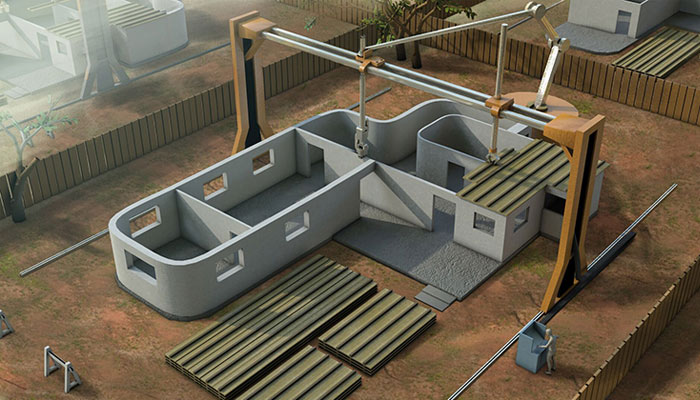As we move through the changing sphere of engineering, one innovation stands prominently in the field of building: 3D fabrication. This groundbreaking method is revolutionizing the method structures and structures are conceived and assembled, bringing forth a new era of efficiency, sustainability, and creativity.
Reshaping Building: One Layer at a Moment
The adoption of 3D fabrication in construction presents numerous revolutionary advantages. Foremost among these is the drastic decrease in resource waste. Traditional construction methods typically result in notable surplus resources that lead to ecological waste. In comparison, 3D manufacturing utilizes a accurate incremental approach, consuming only the necessary amount of material and thus minimizing surplus greatly.
Another significant benefit is the dramatic decrease in building duration. Undertakings that conventionally take months can be finalized in a fraction of the duration with 3D printing innovations. This speed-up is due to the automated nature of 3D machines that can function continuously without manual intervention, considerably reducing complete construction timelines.
Moreover, 3D fabrication introduces opportunities for developing complex, personalized structures at no additional price. The adaptability of 3D devices allows for intricate frameworks and shapes to be produced that would either be highly expensive or inconceivable to accomplish with traditional infrastructure approaches. This function not only elevates structural aesthetics but also allows builders to maximize plans for enhanced efficiency and resilience.

Reducing Expenses and Boosting Availability
Budget reduction is yet another significant perk delivered by 3D manufacturing in infrastructure. By minimizing manpower spending and slashing the duration required to complete undertakings, the total expenditure associated with constructing structures is minimized. Moreover, cheap 3D fabrication units are becoming more attainable, placing this technology accessible to emerging companies and entrepreneurs keen to experiment with its possibilities.
The affordability of these devices also enables innovation in associated areas such as clothing manufacturing. While primarily acknowledged in construction sectors, the reach of 3D printing extends into various domains including design. Here, creators explore with 3D printed attire, expanding design boundaries and redefining textile design while utilizing cost-effective manufacturing costs.
A Sustainable Vision Driven by Innovation
Environmental responsibility is another foundation of this innovation’s attraction in the building field. 3D printing encourages a eco-conscious strategy to development by reducing material surplus and resource usage. Furthermore, it supports the integration of green resources like recycled plastics or hybrid materials, which further lowers the ecological impact of this conventionally heavy-polluting industry.
The worldwide movement in favor of green practices finds a powerful supporter in 3D manufacturing innovations, possibly transforming how architectural policies and criteria are established going forward. By implementing these cutting-edge processes, the infrastructure sector steps closer to realizing eco-friendly operational models.
Transforming Dreams to Existence
Picture community facilities in disadvantaged neighborhoods being erected within days to serve urgent requirements or architects crafting wonders reminiscent of organic formations that blend effortlessly into their surroundings – such scenarios are not only speculative but are rapidly becoming possible through 3D manufacturing.
While these achievements mark just the start, they suggest a future where development integrates perfectly with both human aspirations and sustainable care.
If we advance on this trajectory, infrastructure will not only represent the physical formation of spaces but also signify a dedication to creative approaches and sustainable existence. Merging imagination with usability, 3D printing is set to redefine our built reality in ways we are just starting to to understand.
Through ongoing improvements and an adoption of these futuristic strategies, our developed spaces will undoubtedly morph into reflections of societal creativity powered by the precision and limitless capabilities of 3D printing.
More information about may in 3d have a look at the best internet page: look at more info
